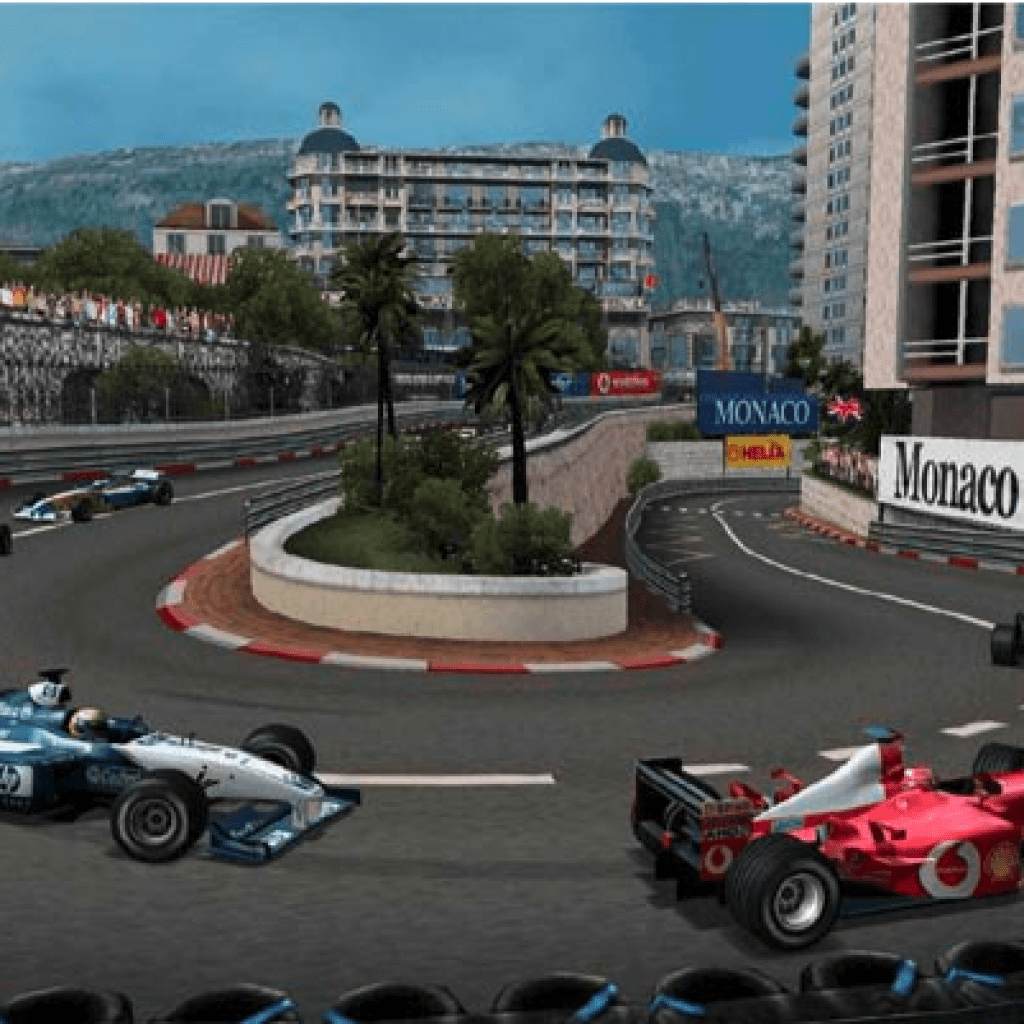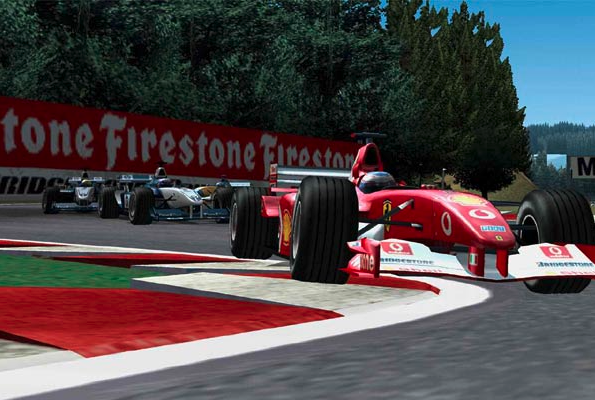If you felt compelled to understand the history of video game graphics, one place to start might be the shift from the number of colors a particular piece of hardware could display to the number of polygons it could render. The Nintendo Entertainment System, for example, had a color palette of 56 individual colors which was dwarfed by the Super NES which boasted 256 colors. By the the fifth console generation (Sega Saturn, Sony PlayStation, Nintendo 64), a seemingly infinite range of colors on screen became more or less table stakes as the discussion shifted to the number of polygons that could be displayed on screen simultaneously and, by extension, how realistic game graphics could become.
This trend continued into the sixth console generation (PlayStation 2, Dreamcast, Xbox, GameCube) with titles like Infogrames’ Grand Prix Challenge boasting on its (now defunct) website that each F1 car model used more than 17,000 polygons and more than 300,000 polygons were used for the race tracks.
The result of this dizzying amount of three-dimensional, video game building blocks is a competent Formula One game that blurs the lines between the instant gratification of an arcade racer and the meticulous constant tweaking of a true simulation game. Officially licensed by the Formula One Administration, Grand Prix Challenge faithfully recreates the 2002 Formula One season with all drivers and circuits intact. The game presents F1 in all its glory with a behind-the-helmet view of the action so that you can see your driver’s white-knuckle grip as they maneuver through turns at breakneck speeds.
Players can enjoy all 17,000 polygons per car across a collection of game play modes. “Single Grand Prix” takes the player through a practice round, qualifier, warm-up, and then the actual race. “Championship” includes an entire 17-race season with one driver crowned the FIA Formula One World Champion. “Grand Prix Challenge” is a series of ten smaller championships that increase in difficulty, challenging even the most dedicated drivers.

All of this F1 goodness came to the PlayStation 2 thanks to developer Infogrames Melbourne House, which was previously known as Beam Software. Beam worked on games for the PC market in the 1980s, cranking out titles on the Commodore 64, ZX Spectrum, and MS-DOS. While Beam would develop a racing-centered title here and there, it was after the studio was acquired by Infogrames and rebranded that they started to make their mark on the genre with a licensed Looney Tunes kart racer, Looney Tunes: Space Race (2000) and ports of Le Mans 24 Hours to various consoles.
Grand Prix Challenge ultimately received no sequels or re-releases. Infogrames Melbourne House would eventually be bought by Atari and then Krome Studios where the studio would pump out a few more licensed games including Terminator 3: Rise of the Machines (2003) for the PlayStation 2 and Xbox, and Transformers (2004) for the Playstation 2. The last racing title to be released by the studio was Test Drive Unlimited (2007) for the PlayStation 2 and PlayStation Portable.

